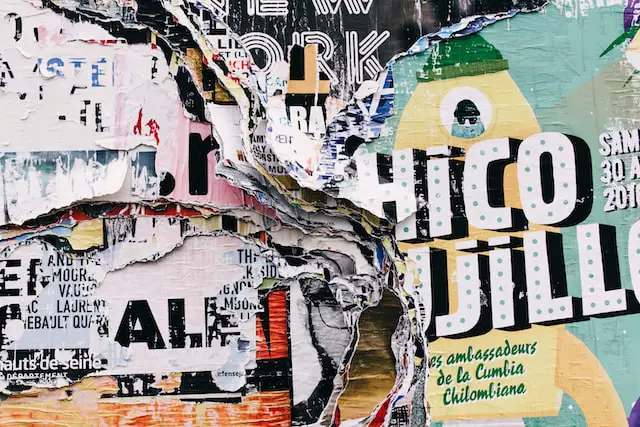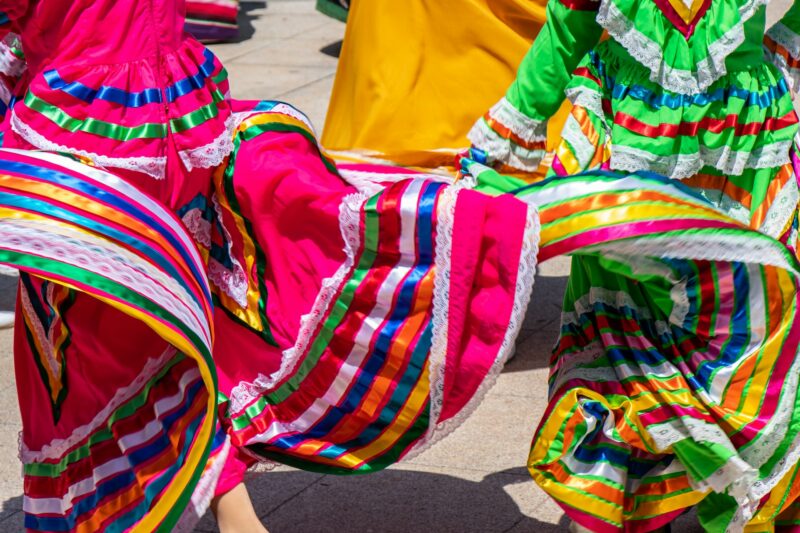Appropriation is when someone takes something without permission and without understanding the cultural context. Appreciation is when someone enjoys and values something from another culture.
Explanation of appropriation
(Photo by Alice Donovan Rouse on Unsplash )

Appropriation is the act of taking something for one’s own use, often without the permission of the owner, It is when you take something from its original context and use it for your own purposes.. In the art world, appropriation is often seen as a form of theft, as the artist is taking someone else’s work and claiming it as their own. However, some artists see appropriation as a way to create new artwork by re purposing existing material.
It can also be a form of flattery, but it can also be seen as disrespectful. It all depends on the intention of the artist and how they use the borrowed material. When done tastefully, appropriation can be a way of paying homage to another artist or culture. But when done carelessly, it can come across as insensitive or even exploitative.
Appropriation can be a controversial topic, as it raises questions about ownership, copyright, and plagiarism.
Explanation of appreciation
Appreciation is when you value and enjoy something for its own sake. It is when someone from a dominant culture takes elements of a marginalized culture and uses them in a way that respects the original meaning. This can be done with the intention of honoring the culture, and it results in no harm to the marginalized culture.
Appreciation is when someone respects and values a culture and its traditions. This is usually done with an understanding and acknowledgement of the history and experiences of that culture.
It all comes down to intention and respect. If you’re simply trying to enjoy someone else’s work for what it is, then that’s appreciation.
How to spot appropriation
In today’s society, it’s important to be aware of the line between appropriation and appreciation. With the ever-growing popularity of social media, it’s easy to share something without thinking twice about it. However, sometimes what we think is an act of appreciation can be seen as cultural appropriation. So, what’s the difference?
If you’re not sure whether something crosses the line into appropriation, ask yourself these questions:
- Am I making fun of this culture or its members?
- Am I trying to profit off of this culture?
- Do I understand and respect the significance of what I’m using?
- Would I feel comfortable if a member of this culture saw me using this element?
If your answers to the above questions are Yes,Yes,No and No respectively – Then it is appropriation
If you’re unsure whether something is appropriation or appreciation, ask yourself this question: would I do this if the people from this culture were in the room with me? If the answer is no, then it’s probably appropriation.
Examples of appropriation vs. appreciation
Appropriation occurs when someone takes something from another culture without understanding or respecting its origins. For example, a fashion designer might appropriate a traditional Native American headdress by using it in a runway show without any context or understanding of its cultural significance. This can be harmful to the original culture, as it can misrepresent and devalue their traditions.
Appreciation, on the other hand, occurs when someone admires and respects another culture’s traditions. They might learn about the history and meaning behind the headdress, and then incorporate it into their own wardrobe in a way that is respectful. This can be a positive experience for both parties involved, as it can help promote cross-cultural understanding and respect.
What are the types of cultural appropriation?
There is no set list of the types of cultural appropriation, as different scholars and communities may define and categorize them differently. However, some commonly recognized types include:
- Borrowing and Incorporation: This refers to the adoption of cultural elements (such as music, fashion, art, or language) from one culture by members of another culture, often without proper understanding or acknowledgement of their original meaning or significance.
- Commodification: This involves the commercialization and mass production of cultural symbols, practices, or artifacts, often without permission or compensation to the originating culture, for profit or aesthetic appeal.
- Stereotyping and Mocking: This type of cultural appropriation involves the reduction of a culture to a set of stereotypical traits or caricatures, often perpetuating harmful and inaccurate depictions of the culture and its people.
- Exoticization and Fetishization: This refers to the objectification and fascination with certain aspects of a culture, often emphasizing their “otherness” or “exoticness” and reducing them to superficial or eroticized elements, rather than acknowledging their complexity and depth.
What is cultural appreciation?
Cultural appreciation is the act of showing respect, admiration, and curiosity towards a culture that is not one’s own. It involves learning about and understanding different cultural practices, beliefs, customs, and traditions, without exploiting, appropriating, or mocking them. Cultural appreciation involves a genuine interest in the cultural heritage and diversity of other communities and a willingness to engage with them in a respectful and meaningful way. It is important to note that cultural appreciation requires a willingness to listen and learn from members of the culture being appreciated, rather than imposing one’s own assumptions or judgments.
What are the benefits of appreciation?
Cultural appreciation can have several benefits, including:
- Promoting Cultural Understanding: Appreciating other cultures can help promote mutual understanding and respect between different communities. It can help individuals recognize and value the diversity of cultures and their unique contributions to society.
- Reducing Prejudice and Discrimination: By learning about and appreciating different cultures, individuals can reduce their prejudices and biases towards people from other backgrounds, leading to a more inclusive and accepting society.
- Building Relationships: Cultural appreciation can help build meaningful and positive relationships between individuals from different cultural backgrounds. It can foster a sense of shared humanity and promote empathy and compassion.
- Enhancing Creativity: Exposure to different cultural practices, arts, and traditions can inspire creativity and innovation in various fields such as art, music, literature, and fashion.
- Personal Growth: Learning about other cultures can broaden one’s perspective, promote critical thinking, and develop a greater sense of self-awareness and empathy. It can also provide opportunities for personal growth and self-discovery.
What are the drawbacksof appropriation?
Cultural appropriation can have several negative consequences, including:
- Perpetuating Harmful Stereotypes: Appropriating cultural elements can reinforce negative stereotypes and prejudices towards the originating culture, reducing it to a set of superficial or exoticized elements.
- Disrespecting Cultural Traditions: Appropriating cultural elements without proper understanding or respect for their origins can disrespect and undermine the cultural traditions and practices they represent.
- Disrupting Cultural Continuity: Appropriating cultural elements can sever them from their original context, erasing their history and meaning, and disrupting their continuity and evolution within their originating culture.
- Exacerbating Inequality: Cultural appropriation can perpetuate the exploitation and commodification of cultural elements, often without compensation or acknowledgment for the originating culture, exacerbating existing economic and power imbalances.
- Offending and Alienating Communities: Appropriating cultural elements can offend and alienate members of the originating culture, who may view it as a form of disrespect or exploitation, leading to division and conflict between different communities.
Cultural appropriation can have harmful and disrespectful consequences, undermining the dignity and value of the originating culture and perpetuating inequalities and prejudices.
Featured Image by Mitchell Luo on Unsplash








